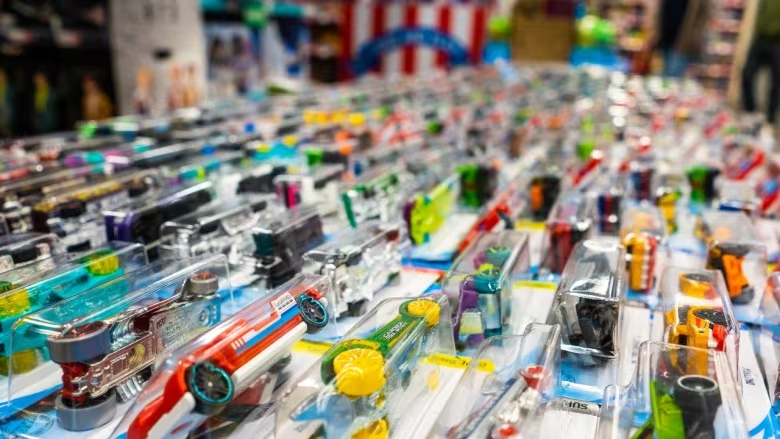
SELINA YANG – SEPTEMBER 27, 2023
EDITOR LARA RAMIEREZ
The majority of my 10-year-old self’s brain power was spent thinking about Pokemon cards. Something about these colorful cardstock rectangles was furiously addictive; was it the dynamic illustrations or holographic overlays of the cards themselves? Or, was it the bustling marketplace where children and suspicious Ebay sellers worked their way up to “rare” cards—high demand, low supply. Was it the art that captured me, or the mini economy that surrounded them?
For my pre-developed brain, the urge to collect underrated artwork was one of the first intuitions of economic value. As a child, even if I couldn’t explain the importance of “buy low, sell high,” I knew I felt the adrenaline rush of a good deal, perhaps monetarily. It was only a good deal to me because I valued the piece’s adherence to my personal taste higher than its wider value. Not every layman can see the value in a $50 piece of cardstock (and up to $6 million, as sold in 2022). This is because economics seeks to provide a transactional system of logic for human behavior, which often seems highly variable, personal, and irrational.
However, this high variation of personal factors leads to the lack of cohesion of classical economics, which is a major modern criticism of the field. In this, the intricacies of human nature are under-accounted for in decision making research. The world of collectibles presents an unique marketplace where niche communities can create a demand that is separate from the mainstream. This allows an individual’s memories to contribute to the value of “emotional assets” as posited by Dimson and Spanjers in 2014. Whether family heirloom jewelry, fine art, or state quarters, everyday objects and luxuries play a role in this story. Collectors can represent the extremes of microeconomic demand. Through studying the economics of collectibles, we attempt to capture a highly personal aspect of human behavior.
Collectibles fly in the face of capitalistic assumptions of value because here profit accumulation is not the goal. The returns on collectibles are highly variable: if you sell off the Mona Lisa, of course you’d get your money back. But the 1989 exclusive action figure from your nostalgic childhood show might only hold value for you. As assets, collectibles face the worst fears of any investor: they combine relative illiquidity whereby they aren’t easily exchanged into monetary value. In addition, there are high holding costs, they require continuous amounts of capital for upkeep, especially in cases of historical preservation. Finally, they are subject to fickle changing social tastes. These fears only hold true if the monetary value of a collectible equates to utility—which, by definition in microeconomics, it doesn’t. Rather, value is measured solely through “utility,” or the amount of satisfaction. With this key distinction that human happiness does not equate to accumulating monetary value, the actions of collectors begin to make more sense. “Utility” can represent nostalgia, humor, or nationalism, all of which collectibles can bring, even while appearing to lose money.
Collectibles were categorized by Burton and Jacobsen in 1999 as objects that lack both productive use and productive costs, because they rely on a resale market. Instead of the value of inputs and outputs, social consciousnesses play a strong role in determining their value. In this, regardless of a piece’s aesthetic appeal, its imagery or provenance can be relevant to social factors. For example, antiques and historical fine arts are only deemed valuable because the society or individual they belong to deem them so. To someone not familiar or indifferent to American history, it wouldn’t matter to them if an 1851 painting was of George Washington, or of a random man. Therefore, what gives the George Washington painting value is its position as an “emotional asset”—the ability to recall the gloriful mythos of American history and stir pride for one’s identity.
While some trends are niche, overall, the demand for artistic collection is both global and historical – the tradition of collection has been with humans since our earliest days. Globally, the most long running data on financial returns on collectibles are for art (measured by pre-20th century oil paintings), stamps, and violins, measuring financial returns between 1900 to 2012. Over this century, while returns dip cyclically during financial shocks such as world wars, the overall trend is positive. In this timeframe, returns on these artistic units consistently return higher than bonds, bills, and gold. What paintings, stamps, and violins share in common is their relation to art: the search for aesthetic beauty, valuation of history, and love for music, respectively. Currency can be inflated and deflated, but no matter the culture, the desire for art will always be a part of human nature. Despite the speculative dynamics of micro trends, the fact that these items are pinned on human nature make them stable investments.
According to the writings of 20th century philosopher Walter Benjamin, the drive to own art, rather than simply being an admirer, comes from “the desire [of the masses] to [overcome] each thing’s uniqueness by assimilating it as a reproduction.” In one interpretation of Benjamin, the emerging mass society—spurred by technological reproduction, creating new consumption habits—has the urge to immediately duplicate and mass spread any one-off pieces of work. Think about a museum gift shop, with the images of historical paintings printed onto T-shirts, bags, and posters—all these can be considered an “assimilation…as a reproduction.” Benjamin wrote in the 20th century, as technological reproduction heightened to allow mass consumption of media: film, photography, and print. As for the 21st century, technological reproducibility will only progress further through an increasing amount of copies. Economically, an increase in copies will make the ratio of originals even smaller, and therefore, higher value.
The question isn’t if art itself is a high return collectible, but which type of art. As the 21st century moves on, more historical pieces of fine art are lost to time and damage, in addition to an increase in replicas. The invention of AI art processors is feared to devalue art as a financial asset, but by this logic, it won’t turn “real” art obsolete. It circles back to “scarcity”—a decreasing supply of “originals” will lead to their higher valuation. NFT’s values are defined by latent code rather than the image’s aesthetic value. There would be no desire to pay such high prices for NFTs if all one cared about was their aesthetic value—anyone could simply screenshot it. Rather than focusing on the work’s immediate aesthetic value, the 21st century collectible’s value comes from this direct representation of scarcity, paying high prices not just for the image’s aesthetic value.
The nicheness of collectible communities fuels another emotion: group belonging. Whether attending fairs to admire others’ collections or banding together on internet forums to track down mythical lost editions, collectibles can band people together. Almost as escapism, collectibles offer a way to structure the world in a way that the individual can control. In separating from mainstream demand, collectible artwork can reflect the intrinsic power of art as shown through its long and stable history, beyond the pushes of capitalism and marketing.
Featured Image Source: Shutterstock
Disclaimer: The views published in this journal are those of the individual authors or speakers and do not necessarily reflect the position or policy of Berkeley Economic Review staff, the Undergraduate Economics Association, the UC Berkeley Economics Department and faculty, or the University of California, Berkeley in general.



